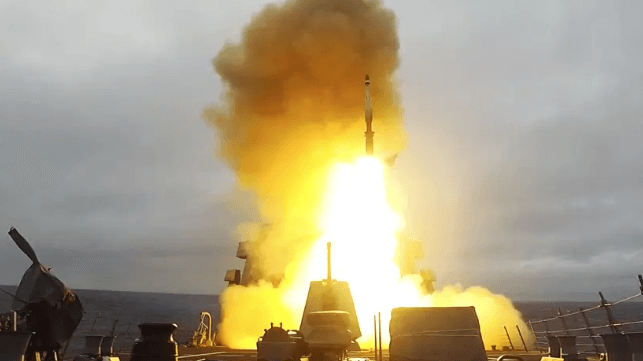U.S. Navy Used Up Missiles at "Alarming Rate" to Defeat Iranian Strikes

The end of hostilities between Iran and Israel appears to be good news for U.S. Indo-Pacific Command. Among other assets in the inventory, the conflict was consuming the U.S. Navy's much-needed stock of ballistic missile interceptors (Standard Missile / SM-series) at an "alarming rate," acting Chief of Naval Operations Adm. James Kilby told the Senate Appropriations Committee - interceptors that the Navy would need in a Taiwan Strait conflict.
At a hearing Tuesday, a senator asked Kilby whether the U.S. Navy has all the SM-3s it needs for global threats. "We do, sir, but we are - to your point - using them at an alarming rate," Kilby answered. "We are using them quite effectively in the defense of Israel."
While Kilby emphasized that the service still has enough SM-3s in stock, there is an ongoing concern that the Navy's effort to shoot down Iranian ballistic missiles - first in the Red Sea campaign against Iran-backed Houthis, then again this month to protect Israel - has been eating into the interceptor stockpile. The U.S. missile industrial base is constrained by multiple factors, and cannot quickly increase production to replace SM-class missiles that get used up.
SM-3 and SM-6 interceptors would be essential in any U.S. conflict with China, and would be needed in quantity. Everywhere inside of the second island chain, Navy surface forces would be in range of the People's Liberation Army's DF-26 antiship ballistic missile (ASBM), augmented by the smaller DF-21 inside of the first island chain. In addition to their ability to counter China's ballistic missiles, the same SM-3 and SM-6 interceptors are multirole, and could be used against all other airborne threats (and surface targets as well).
At the same hearing, Navy Secretary John Phelan emphasized that the service is trying hard to accelerate procurement of these in-demand capabilities, including options for bringing in other suppliers. "This is a huge priority from both the secretary of defense and the president, and we are putting as much effort and time into this as we are in shipbuilding," Phelan said.
